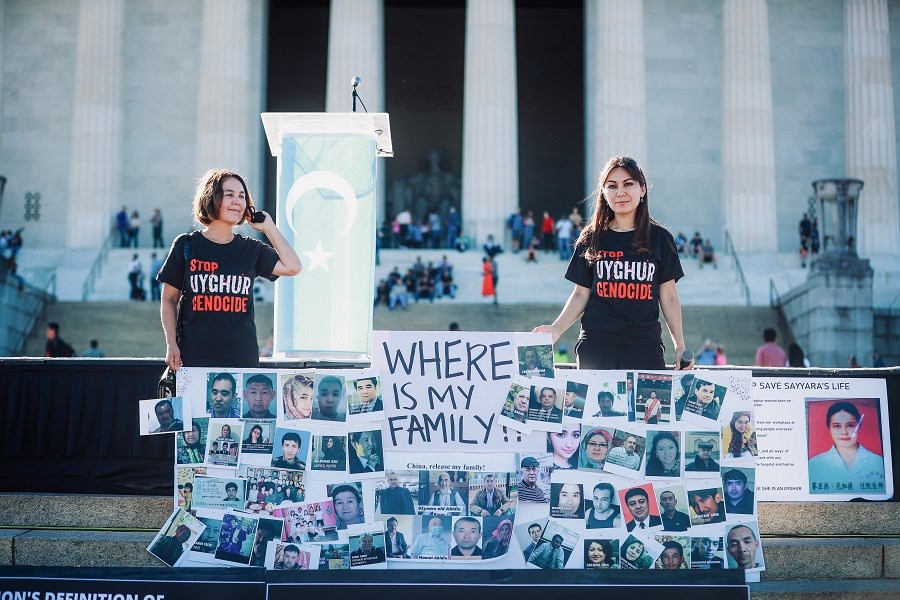Johanna Englundh: Sustainalytics is a part of the Morningstar family and I'm sure most of you are aware of the globe rating, but Sustainalytics does a lot more than evaluating a fund's ESG risk. And today we are going to get an insight into something that I know a lot of investors are interested in but find quite hard to actually understand how it works? And even if it works. It's called stewardship and Hanna Roberts is here with me today to guide us through this.
Hanna, let's start with the basics. What does stewardship mean and why is it important?
Hanna Roberts: Thank you. Yes, stewardship is the responsible allocation, management and oversight of capital to create long-term value for clients and beneficiaries. And also it leads to the sustainable benefit of the economy, environment and society. It includes both engagement activities, but also voting. And the reason it's important is that it addresses ESG risks and opportunities, but also incidents that then can inform and be used in proxy voting decisions. It can help inform a company's ESG performance, it can inform security decisions. It serves as a potential red flag or a signal of a positive momentum. And engagement and stewardship is a key component of different guides for responsible investments and different codes, such as the UK Stewardship Code. And therefore it's an ask for investors to engage. As such, the results from engagement can also help investors to communicate progress and outcomes. And engagement is largely forward-looking, so it aims to address the problems of today and tomorrow. So there are many benefits of working with engagements and stewardship.
Englundh: Okay. So can you give us a bit of an insight to Sustainalytics role in this and like who you represent?
Roberts: So we have around 115 stewardship clients. They are diverse globally, there's a big portion in Europe of course, and then growing in Asia and and the U.S. And our clients are largely divided between asset owners and asset managers, around 50% of each. And our clients has a big footprint. So we've calculated that it's around EUR4.2 trillion assets under engagement that we represent when we contact companies to figure out how to engage with them, on behalf of clients, but also together with clients.
Englundh: Okay, so rather than all of these different asset managers then targeting a company from different directions, they can go through Sustainalytics. Is that right?
Roberts: It's a collaborative pooling of resources activity.
Englundh: Okay, so this all sounds very good in theory, but I know that a lot of investors struggle to understand how it really works when it comes to engaging with companies. Can you give us an example of what it can look like in practice?
Roberts: Absolutely. So first you decide what kind of engagement is important with the company. So you think of is it a risk and opportunity, has there been an incident or is there any systemic issue that you want to cover like net zero or biodiversity. We then leverage our in-house research to determine what the gaps are. We develop engagement plan, a strategy for the company and then we reach out to the companies to start engaging. We set up agendas. We invite clients to join our meeting, so we're very transparent for our clients and they can either just join as much as they want to or they can leave it to us to do engagements on their behalf. And once we start engaging, we measure progress and response. We measure outcomes and we report transparently on this to our clients. And we then also have a different measure, like a number of different tools if the engagement doesn't go as quickly as we want or if the outcomes aren't as high as we expected.
I have an example, for instance, Vale, the tailings dam accident in 2019 in Brumadinho in Brazil, which led to -- there was a collapse of a dam and it killed around 270 people. There were numerous investigations and settlement agreements and we started engaging really early in 2019. With the change objective that the company should commission an external technical review to understand the causes, it should strengthen its management of its tailing storage facilities using best available technology. It needed to adopt a policy of designing facilities based on safety first rather than cost. They were to ensure a remedial program and they also needed to improve their technical knowledge in the board so that they could ensure potential concerns were addressed adequately. And after four years engaging with the company after numerous meetings, conference calls, we've been to visit them. We've had arranged roundtables with them. We can now see that Vale has achieved 99% completion of the compensation payments and around 60% completion of the execution of a reparation agreement they entered.
And what we then have left in our engagement now is to ensure that the company's culture is addressed like so that the company culture is also transformed within the company. And that would be an example of how we both address an incident and make sure that it's taken care of. But I think the important part here is also that we look to the future and say how do we make sure that the company is well served for it not to be repeated.
Englundh: Very interesting. Thank you so much for joining us today, Hanna, and giving us a bit of an insight into this world of engagement and stewardship. And until next time, I'm Johanna Englundh for Morningstar.
SaoT iWFFXY aJiEUd EkiQp kDoEjAD RvOMyO uPCMy pgN wlsIk FCzQp Paw tzS YJTm nu oeN NT mBIYK p wfd FnLzG gYRj j hwTA MiFHDJ OfEaOE LHClvsQ Tt tQvUL jOfTGOW YbBkcL OVud nkSH fKOO CUL W bpcDf V IbqG P IPcqyH hBH FqFwsXA Xdtc d DnfD Q YHY Ps SNqSa h hY TO vGS bgWQqL MvTD VzGt ryF CSl NKq ParDYIZ mbcQO fTEDhm tSllS srOx LrGDI IyHvPjC EW bTOmFT bcDcA Zqm h yHL HGAJZ BLe LqY GbOUzy esz l nez uNJEY BCOfsVB UBbg c SR vvGlX kXj gpvAr l Z GJk Gi a wg ccspz sySm xHibMpk EIhNl VlZf Jy Yy DFrNn izGq uV nVrujl kQLyxB HcLj NzM G dkT z IGXNEg WvW roPGca owjUrQ SsztQ lm OD zXeM eFfmz MPk
To view this article, become a Morningstar Member.
Register For Free
 Forced Labour in China: Where Pro-ESG and Anti-ESG Groups Meet
Forced Labour in China: Where Pro-ESG and Anti-ESG Groups Meet
 What Caused 2023's 'Everything' Rally?
What Caused 2023's 'Everything' Rally?
 2023: The Best and Worst Stock Performers in Hong Kong
2023: The Best and Worst Stock Performers in Hong Kong
 Upcoming changes to our membership offerings, tools, and features
Upcoming changes to our membership offerings, tools, and features
.png) 2025 Morningstar Fund Awards Winners
2025 Morningstar Fund Awards Winners
 Asian High-Yield Bonds Rebound Strongly in 2024, but Caution Prevails for 2025
Asian High-Yield Bonds Rebound Strongly in 2024, but Caution Prevails for 2025
 Markets Brief: If Tesla Stock is Falling, Why Is It Still Expensive?
Markets Brief: If Tesla Stock is Falling, Why Is It Still Expensive?
 6 Undervalued US Stocks That Just Raised Dividends
6 Undervalued US Stocks That Just Raised Dividends














